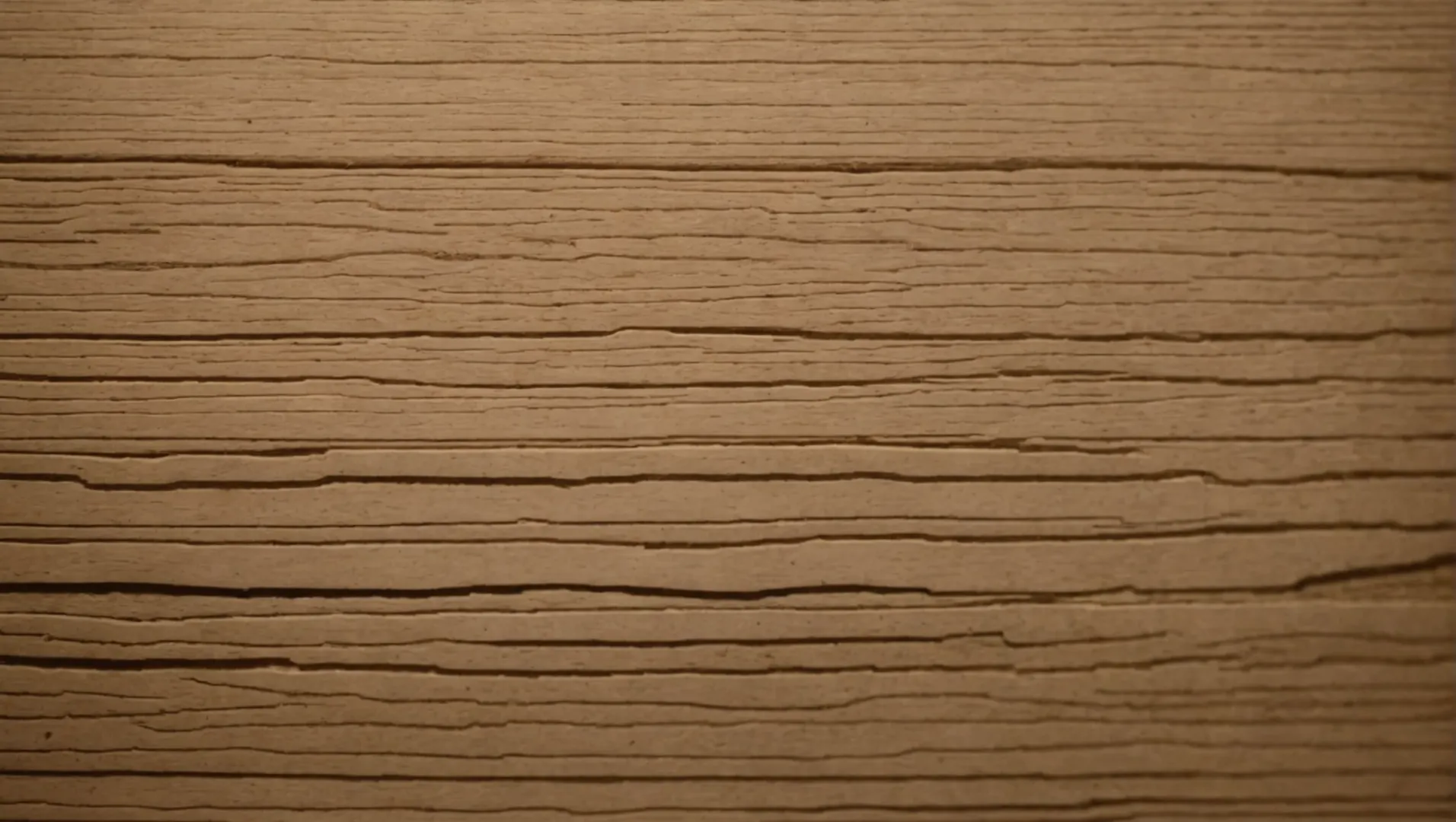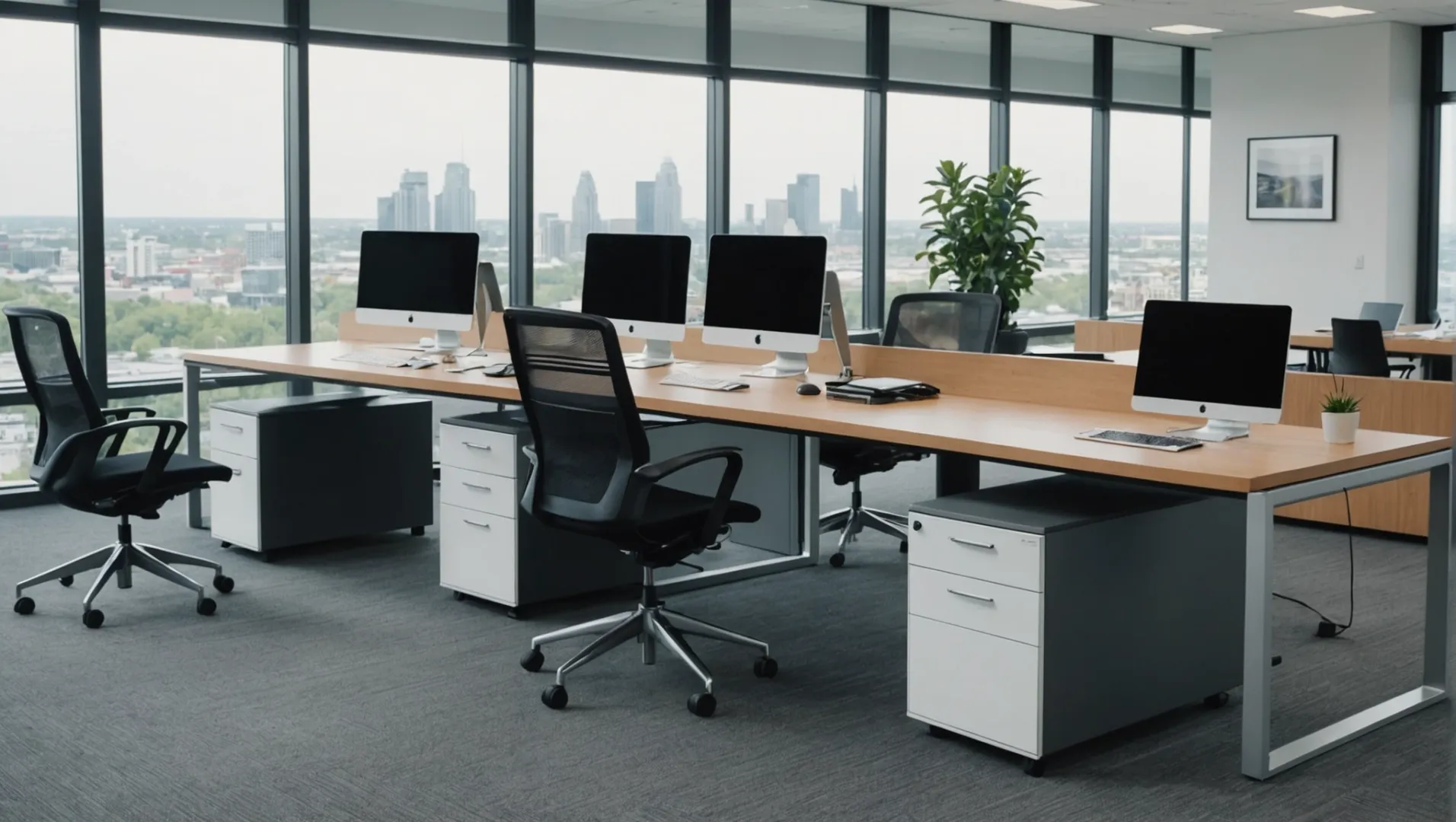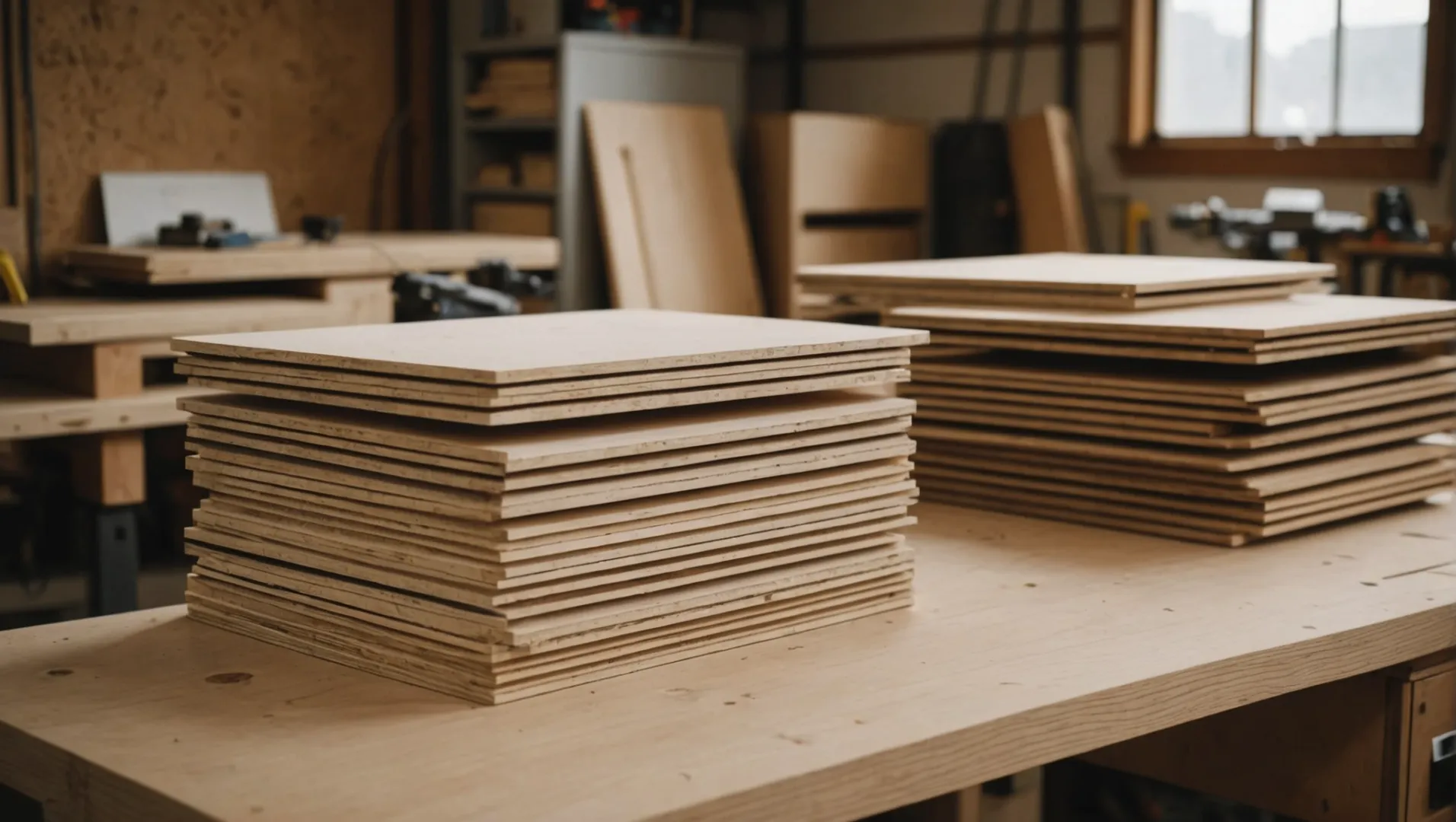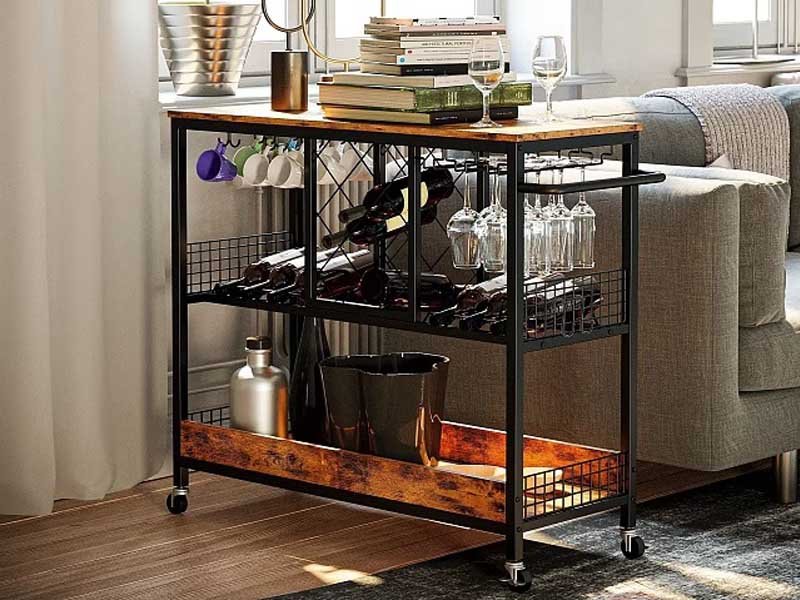Choosing the correct plywood for office furniture may seem complicated.
The best type of plywood for office furniture is typically Baltic Birch or Marine Grade plywood due to their excellent strength, smooth finish, and moisture resistance.
These choices are known for their very high quality. Choosing the best plywood requires more than just knowing the name. Grasping the special characteristics of each kind may assist with choosing one that fits your specific requirements. Your office furniture should match both its functional purposes and design hopes.
Baltic Birch plywood is best for office furniture.True
Baltic Birch provides great durability, sleek surface and water resistance.
What are the Key Features of Quality Plywood?
Plywood holds great importance in crafting furniture, but what determines plywood's high quality?
Quality plywood should possess attributes like strong core veneers, consistent thickness, minimal voids, and a smooth finish. These features ensure durability, aesthetic appeal, and reliable performance in various applications.

Core Veneer Strength
Core veneers shape the main part of plywood, strongly impacting strength and stability. Good plywood uses strong, knot-free woods like birch or oak. These woods provide great strength and resist bending or twisting. Knowing about wood types1 helps pick the best core veneer.
Consistent Thickness
Quality plywood has the same thickness from start to end. Differences in thickness cause weak points and problems during setup. When buying plywood, use a tool to check thickness at many points on the sheet.
Minimal Voids
Voids are empty spaces between veneer layers that weaken the plywood. Good plywood has few or no voids. Check the edges; visible voids may show hidden problems inside.
Smooth Finish
A smooth finish looks nice and prepares the surface for paint or varnish. Good plywood has a sanded top layer with no splinters or rough spots. Learning about finishing options2 can better the surface.
Adhesive Bonding
Adhesive bonds veneers and affects plywood quality. Phenolic resin adhesives are often used in high-quality plywood due to strong bonding and water resistance. Select plywood with good adhesives to handle environmental pressures effectively.
Resistance to Moisture and Pests
For office furniture, plywood should resist water and pests. Look for water-resistant types like Marine Grade plywood, made for damp conditions. In areas with termites or pests, choose plywood with pest treatments3.
High-quality plywood has consistent thickness.True
Uniform thickness stops structure problems and setup troubles.
Quality plywood can have visible voids.False
Visible gaps suggest possible problems in the structure, lowering quality.
How Does Plywood Type Affect Furniture Durability?
Selecting suitable plywood is important for building sturdy office furniture that lasts a long time.
Plywood type directly impacts furniture durability by influencing strength, resistance to wear, and overall lifespan. Opting for high-grade plywood like Baltic Birch ensures robust construction, while lower grades might compromise furniture longevity. The choice affects everything from load-bearing capacity to aesthetic appeal and susceptibility to environmental factors.

Using Simple Guide to Plywood Grades
Plywood comes in different types, each with its own quality and strength. Better grades, like Baltic Birch or Marine Grade, are sturdy and resist bending. These types usually have several layers glued together, giving extra strength to the furniture. Cheaper plywood might have gaps and weaker glue, so it is not ideal for busy office spaces.
Importance of Veneer Layers
Veneer layers are important for plywood’s strength. Good-quality veneers look smooth and do not crack easily. This affects how nice furniture looks and how well it holds up against daily use. For office furniture, which needs to look good and last long, picking plywood with the best veneers is wise.
Core Building Tips
The middle part of plywood, whether made of hard or soft woods, affects its toughness. Hardwoods provide more stability than softwoods. This stability matters for office furniture that needs to hold heavy things or move often. Cross-banded layers4, with grains going in different directions, also add strength and stop bending.
Weather Effects on Durability
Office furniture sometimes has to cope with changing weather, like humidity and temperature. Plywood such as Marine Grade stands up to moisture, good for places where it is damp. Choose plywood that suits the office conditions to avoid peeling and damage, making furniture last longer.
Conclusion: Choose Wisely
Knowing what affects plywood strength is important, but think about what your office really needs when picking. Whether you need toughness, looks or water resistance, your plywood choice affects how well and how long your furniture lasts.
High-grade plywood ensures longer furniture lifespan.True
Baltic Birch is a top-quality plywood. It increases strength and lasts longer.
Softwood cores in plywood offer greater stability.False
Hardwood cores offer greater firmness and strength than softwood.
Why is Moisture Resistance Important for Office Furniture?
Moisture protection in office furniture is important to keep it lasting long and looking good, stopping harm from dampness or unexpected spills.
Moisture resistance is vital for office furniture as it prevents warping, swelling, and mold growth, ensuring longevity and maintaining aesthetic appeal in varying environments.

The Role of Moisture Resistance
Office furniture faces various weather conditions, which affect how long it lasts. Moisture-resistant materials help furniture survive these conditions without losing strength. Desks, chairs, and shelves stay strong and useful for a long time.
Protecting Against Environmental Factors
Humidity and temperature changes are common in offices, especially those with large windows or poor cooling systems. Materials that resist moisture fight these problems by stopping warping and swelling5, which happen when wood takes in water.
- Warping: Happens when wood bends or curves because of moisture, causing parts not to fit right.
- Swelling: Extra moisture causes wood to grow bigger, which might lead to cracks or breaks.
Health Benefits
Moisture-resistant office furniture helps keep the work area healthy. By keeping away moisture, these materials stop mold and mildew from growing, which might cause allergies or breathing issues in workers. Keeping furniture from hurting indoor air quality is very important for employee comfort.
Enhancing Aesthetic Appeal
Furniture that resists moisture keeps its look and color much longer than those that don't. This trait is key for keeping an office looking professional. New-looking furniture gives a good impression on clients and cheers up employees.
In conclusion, while there are many things to think about when choosing office furniture, moisture resistance should probably be a top consideration for both good function and long life.
Moisture resistance prevents office furniture warping.True
Water resistance prevents wood from warping because of moisture.
Non-resistant furniture enhances indoor air quality.False
Furniture not resistant to mold probably collects it, really worsening air quality.
What Are the Cost Considerations When Choosing Plywood?
Understanding the price of plywood is important for finding a balance between expenses and quality for your office furniture.
When choosing plywood, consider factors such as wood species, thickness, grade, and finish, which all influence cost. Higher-grade plywood like Baltic Birch often costs more due to its superior durability and finish quality. Also, factor in transportation and waste during fabrication for a comprehensive cost evaluation.

Using Plywood Grades and Their Prices
Plywood comes in grades like A, B, C, and D, showing the quality and look of the wood surface. Grade A plywood is smooth and has few flaws, making it good for parts you see. It costs more. Grades C or D cost less but need extra work for a nice finish.
Importance of Thickness
Plywood thickness changes both its price and strength. Thicker plywood, like 3/4 inch, offers more stability and is good for strong furniture. It costs more than thinner options like 1/2 inch plywood, which probably works for lighter needs.
Effect of Wood Type
The wood type in plywood strongly affects its price. For instance, Baltic Birch6 is known for high quality and lasts long but has a higher cost. Cheaper options, like softwood plywoods such as pine, do not last as long or look as nice.
Extra Costs: Finish and Transport
The finish on plywood raises its price. Unfinished plywood is less costly. Pre-finished options save time and labor later. Also, transport costs7 depend on weight and distance to your place. Consider these in your budget.
Waste and Efficiency Thoughts
Think about waste during cutting and assembly. Good planning and cutting reduce waste and costs. Using a skilled cutting service8 could be a wise choice for accuracy and lowering material waste.
Baltic Birch plywood is the cheapest option.False
Baltic Birch is top-notch because it lasts long and is of good quality.
Thicker plywood increases cost and stability.True
1.91 cm thick plywood provides additional strength but raises expenses.
Conclusion
Select plywood by considering your office's requirements, balancing durability with appearance for stylish furniture.
-
Gain insight into various wood types for optimal core strength.: The first type consists of a center veneer core and a crossband veneer on both sides of the center with a layer of MDF, particleboard, or hardboard under the ... ↩
-
Discover methods to enhance plywood surface quality.: slight coating of shellac to close the pores, then many ( >=3) thin coats of polyurethane with careful light sanding between each layer and you ... ↩
-
Learn about treatments protecting plywood from pests.: Another option is to apply anti-termite chemicals to your raw wood furniture or plywood. Once applied, they should cure for 6 to eight hours ... ↩
-
Discover how cross-banding improves structural stability.: Doing two separate veneer cross bands gives you more control over customization of the look or pattern you want. However it is a lot more labor intensive. ↩
-
Discover how moisture leads to warping and swelling in wood.: When the air is dry, wood loses moisture and shrinks. Excessive shrinking or swelling can affect the look of the wood or possibly cause cracks ... ↩
-
Discover why Baltic Birch is a popular choice for quality furniture.: Baltic birch has a nice appearance for certain types of furniture as well. Casework, cabinets, drawer boxes, children's furniture (above), craft ... ↩
-
Learn how shipping expenses impact your overall plywood budget.: Production Costs: The cost of manufacturing plywood, including labor, energy, and transportation, impacts its price. Increases in wages, fuel ... ↩
-
Explore how precision cutting services can reduce material waste.: The fact that this cutting service is significantly more affordable than “genuine” wood is another factor in its appeal. ↩

